Products
ISSI engineers solutions for a wide range of industries and applications. Browse our products to see which might most benefit your needs.
Optical Measurement Technology
Pressure Sensitive Paint
Pressure sensitive paint (PSP), unlike pressure taps and transducers, provides virtually limitless spatial resolution and can be easily applied and removed from most test surfaces. Moreover, the optical sampling provides a means for low-cost, non-intrusive, full-field surface pressure and temperature measurements very early in the design cycle to enhance extensively the understanding of the aerodynamics underlying force and moment data. Applications range from pressure measurements and loads measurements on aircraft and automotive models to film-cooling measurements.

Temperature Sensitive Paint
The advantages of temperature sensitive paint include non-intrusive measurements and high spatial resolution when compared to conventional measurement techniques. Much like pressure sensitive paint, image based temperature measurements using TSP are accomplished by coating the model surface with the paint and illuminating the surface with an LED of the appropriate wavelength. The luminescence from the surface is recorded using a CCD camera through a long-pass filter to separate the luminescent signal from the excitation light. The luminescence from the TSP is a function of the local temperature, and therefore, each pixel on the camera acts as a thermocouple. Applications include heat transfer and boundary layer transition measurements.
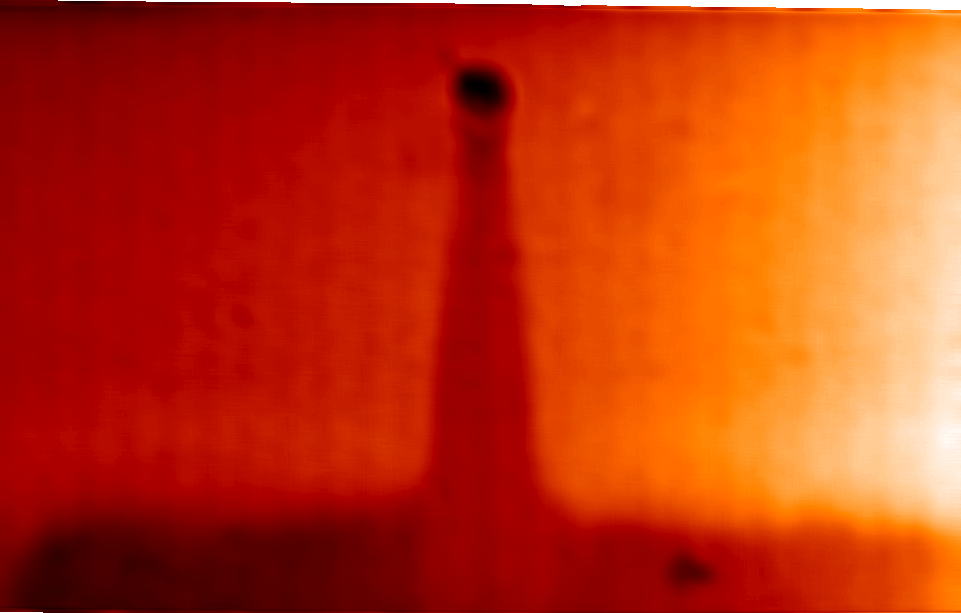
Particle Shadow Velocimetry
Particle shadow velocimetry (PSV) is a novel technique that shares many of the attributes of microPIV and Forward Scatter PIV (fsPIV). It utilizes low-power pulsed LED light sources to measure the displacement of seed particles in a flow. PSV images can also be used to characterize particle parameters such as size and shape. Since this is a volumetric illumination technique, it relies on the receiver optics to optimize the depth of field for the measurement. Any pulsed light system can be used as the light source; however, LEDs are particularly well suited since they can be over-driven in a short-pulse mode to produce intense sub-microsecond light pulses. Furthermore, the use of LEDs combined with a high speed camera results in a high-speed system with bandwidth of 10’s of kHz. Because the technique does not rely upon weak-particle light scattering, lasers are neither necessary nor recommended for use with this approach. Applications include measurement of flow fields in small areas especially near surfaces.
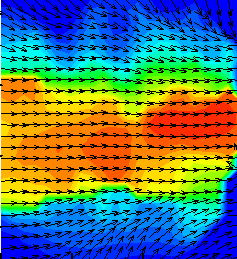
Surface Stress Sensitive Film
Surface Stress Sensitive Film (S3F) is an optical instrument for measurements of local shear stress and contact pressure. The basis of this measurement is an elastic film that deforms under the action of the applied loads. The reaction of the film is monitored either by imaging the surface or by embedded sensors in the film. The film reaction is then modeled using finite element analysis resulting in a continuous distribution of skin friction and pressure over the surface. Applications range from insect locomotion to gait analysis and tire damage and wear measurement.
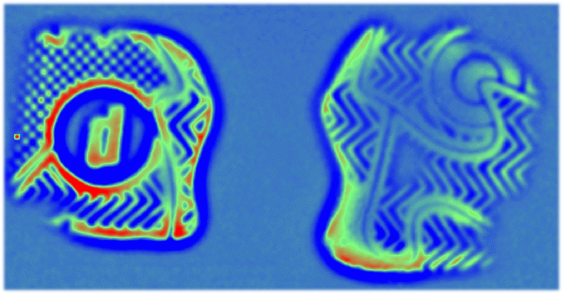
Timing & Control Devices
From machine vision to surveillance to integrated imaging systems, ISSI can develop a solution to meet demanding customer applications. Lens control of EF and motorized zoom lenses increases the capability of any vision system. Our lens control products can be seamlessly incorporated into your system.
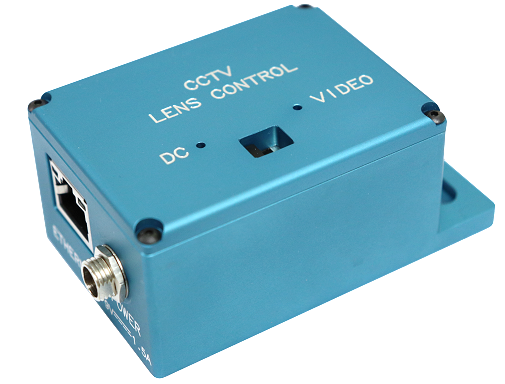
High-Intensity LED Modules
High-intensity LED light sources are used for a wide variety of scientific measurements including: pressure and temperature sensitive paints, schlieren, shadowgraph and particle shadow velocimetry. ISSI offers various models with both air, forced air and water cooling. Water-cooled LED systems deliver higher output power and are typically used in larger research facilities and for fast pressure sensitive paint measurements.
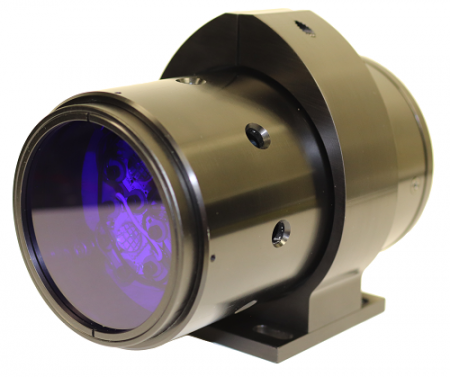
Molecular Iodine Cells
The spectrum of molecular Iodine includes discreet rotational and vibrational bands with very fine structure in the visible (490-650 nm) spectrum. For this reason, Iodine has been used as frequency references for years. More recently, Iodine has been used as frequency discriminators in Planar Doppler Velocimetry (PDV) and Filtered Rayleigh Scattering (FRS) systems.
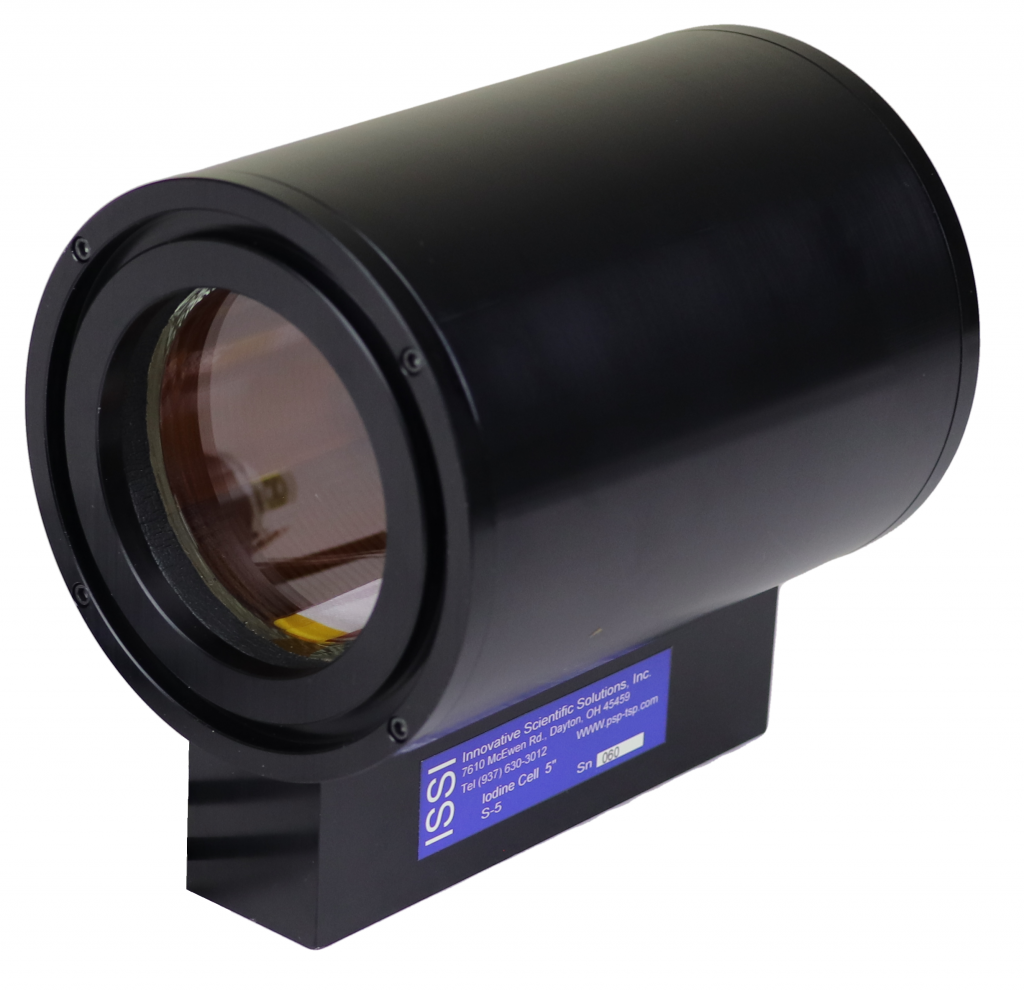
For ordering information please contact our sales department: [email protected] or call us at (937) 630-3012
For technical support, please contact our support department: [email protected] or call us at (937) 630-3012
